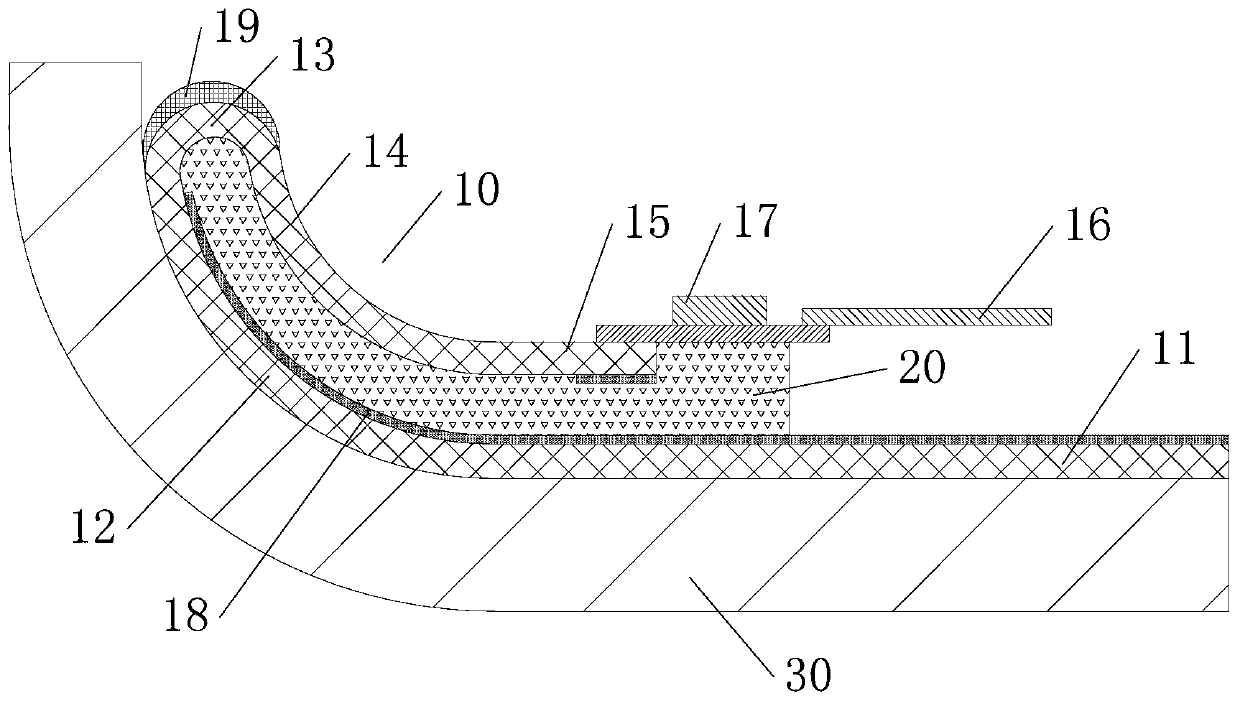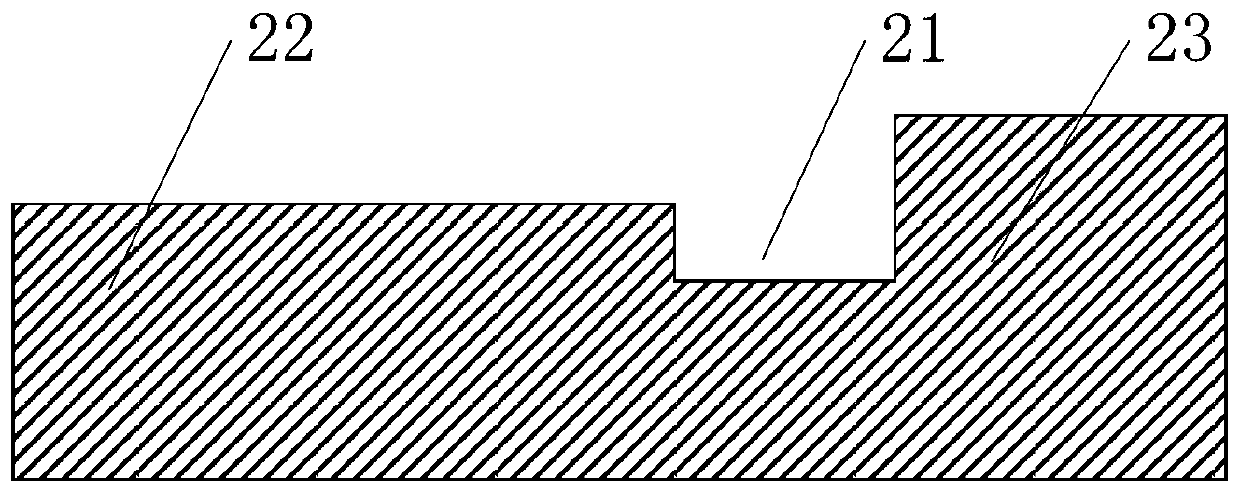Display panel, manufacturing method thereof and display device
A display panel and flexible display technology, applied in the fields of display devices, display panels and manufacturing methods thereof, can solve the problems of weak impact resistance, source-drain metal wire breakage, etc., and achieve the effect of being less prone to breakage
- Summary
- Abstract
- Description
- Claims
- Application Information
AI Technical Summary
Problems solved by technology
Method used
Image
Examples
Embodiment Construction
[0039] In order to illustrate the present invention more clearly, the present invention will be further described below in conjunction with preferred embodiments and accompanying drawings. Similar parts in the figures are denoted by the same reference numerals. Those skilled in the art should understand that the content specifically described below is illustrative rather than restrictive, and should not limit the protection scope of the present invention.
[0040] The thickness of each layer and the size and shape of each layer in the drawings do not reflect the real proportion of each layer, and the purpose is only to schematically illustrate the content of the present invention.
[0041] An embodiment of the present invention provides a display panel, such as figure 1 As shown, a flexible display substrate 10 and a glue 20 are included. The flexible display substrate 10 includes a plane area 11, a first arc area 12, a bending area 13, a second arc area 14 and an edge area ...
PUM
 Login to View More
Login to View More Abstract
Description
Claims
Application Information
 Login to View More
Login to View More - R&D
- Intellectual Property
- Life Sciences
- Materials
- Tech Scout
- Unparalleled Data Quality
- Higher Quality Content
- 60% Fewer Hallucinations
Browse by: Latest US Patents, China's latest patents, Technical Efficacy Thesaurus, Application Domain, Technology Topic, Popular Technical Reports.
© 2025 PatSnap. All rights reserved.Legal|Privacy policy|Modern Slavery Act Transparency Statement|Sitemap|About US| Contact US: help@patsnap.com



